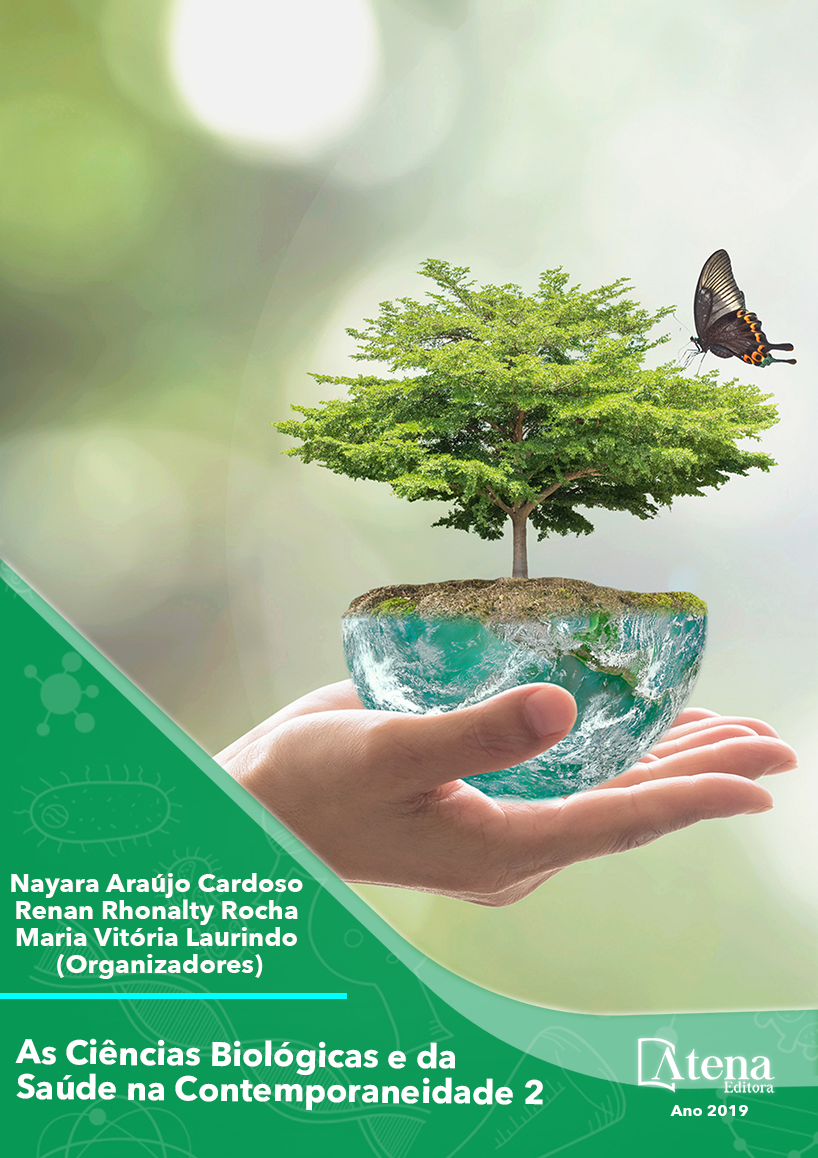
AVALIAÇÃO DOS EFEITOS DA VITAMINA C SOBRE A DEFESA ANTIOXIDANTE ENZIMÁTICA NA FASE AGUDA DA DOENÇA DE CHAGAS EM CAMUNDONGOS EXPERIMENTALMENTE INFECTADOS COM A CEPA QM2 DE Trypanosoma cruzi
O presente estudo testou o papel
da vitamina C na doença de Chagas através de
estudo bioquímico da G6PD e FRAP. Para tanto,
foram determinados os perfis antioxidantes
de animais infectados e não infectados e
suplementados ou não com vitamina C, no
15°, 30° e 60° dia pós-infecção, separados
aleatoriamente em quatro grupos (A, B, C e
D) de 12 camundongos “Swiss”. Os resultados
obtidos indicaram: a) G6PD: No tecido muscular
esquelético e no fígado, separadamente, houve
p<0,05 entre grupo A e D durante os 30 dias
pós-infecção e entre os animais do grupo D
entre 15 e 30 dias. No músculo houve p<0,05
entre os grupos B e D no 30° dia, além de
apresentar os menores valores enzimáticos
quando comparado aos demais tecidos no 30°
e 60° dias. No fígado, houve os maiores valores
de atividade enzimática durante o 30° e 60° dia.
Os três tecidos apresentaram p<0,05 entre os
animais do grupo A entre 15 e 60 dias e também
no grupo B entre 15 e 30 dias. b) FRAP: No
15° dia pós-infecção, a atividade antioxidante
foi maior nos animais infectados, o que também
ocorreu no 30° dia. Nos três tecidos do grupo
A houve aumento da capacidade antioxidante
ao longo dos 30 dias. No músculo do grupo D,
houve diminuição da capacidade antioxidante
nos 30 dias. No grupo B entre 15 e 60 dias
houve aumento da capacidade antioxidante
total do coração e fígado. Entretanto, no grupo
C, entre 15 e 30 dias, ocorreu uma diminuição
na capacidade antioxidante total do tecido
hepático. Concluímos então: a) G6PD: Em
alguns momentos, a vitamina C atuou com
efeito pró-oxidativo, sendo, portanto, prejudicial
ao tratamento da doença de Chagas, em
outra associação, não foi possível especificar
se foi a vitamina C ou a própria infecção que
aumentou o dano celular. Pode-se questionar
a possibilidade de a vitamina C, nos três
tecidos, ter um efeito pró-oxidativo no início
da infecção/tratamento, já que com 30 dias há
um aumento significativo do estresse oxidativo,
enquanto que com a infecção ocorreu com
aproximadamente 60 dias pós-infecção. b)
FRAP: A suplementação com vitamina C pode
ter sido maléfico, considerando um efeito pró oxidante da substância.
AVALIAÇÃO DOS EFEITOS DA VITAMINA C SOBRE A DEFESA ANTIOXIDANTE ENZIMÁTICA NA FASE AGUDA DA DOENÇA DE CHAGAS EM CAMUNDONGOS EXPERIMENTALMENTE INFECTADOS COM A CEPA QM2 DE Trypanosoma cruzi
-
Palavras-chave: Trypanosoma cruzi. defesas antioxidantes. glicose-6-fosfato desidrogenase. FRAP. estresse oxidativo.
-
Keywords: Trypanosoma cruzi. antioxidant defenses. glucose-6-phosphate dehydrogenase. FRAP. oxidative stress.
-
Abstract:
This study sought to clarify the true role of vitamin C in Chagas disease
through an enzymatic study of G6PD and FRAP. The antioxidant profiles of 12
infected and uninfected and vitamin C-supplemented animal and not supplemented
were randomly assigned to four groups (A, B, C and D) of 12 Swiss mice. The results
indicated: a) G6PD: In skeletal muscle tissue and liver, there were p <0.05 between
group A and D during the 30 days postinfection and between the animals of group D
between 15 and 30 days. In the muscle there were p <0.05 between groups B and D
on the 30th day, in addition to presenting the lowest enzymatic values when compared
to the other tissues in the 30th and 60th days. In the liver, there were the highest
values of enzymatic activity during the 30th and 60th day. The three tissues presented
p <0.05 between the animals of group A between 15 and 60 days and also in group
B between 15 and 30 days. b) FRAP: On the 15th day post-infection, the antioxidant
activity was higher in the infected animals, which also occurred on the 30th day. In the
three tissues of group A there was an increase in antioxidant capacity over the 30 days.
In the muscle of group D, there was a reduction of the antioxidant capacity in the 30
days. In group B between 15 and 60 days there was an increase in the total antioxidant
capacity of the heart and liver. However, in group C, between 15 and 30 days, there
was a decrease in the total antioxidant capacity of the hepatic tissue. We conclude a)
G6PD: At some moments, vitamin C acted with pro-oxidative effect, and, therefore,
harmful to the treatment of Chagas disease, in another association, it was not possible
to specify if it was the vitamin C or the infection itself that increased the damage cell.
One may question the possibility that vitamin C in the three tissues has a more recent
pro-oxidative effect, since at 30 days there is a significant increase of oxidative stress,
while the infection reaches it with approximately 60 days post infection. b) FRAP:
Vitamin C supplementation proved to be harmful to the treatment of Chagas due to the
increase in antioxidant activity.
-
Número de páginas: 15
- Bruna de Lima Pereira
- Ludmyla Toller Cocco
- Luciamare Perinetti Alves Martins
- Patrícia Milani de Moraes


